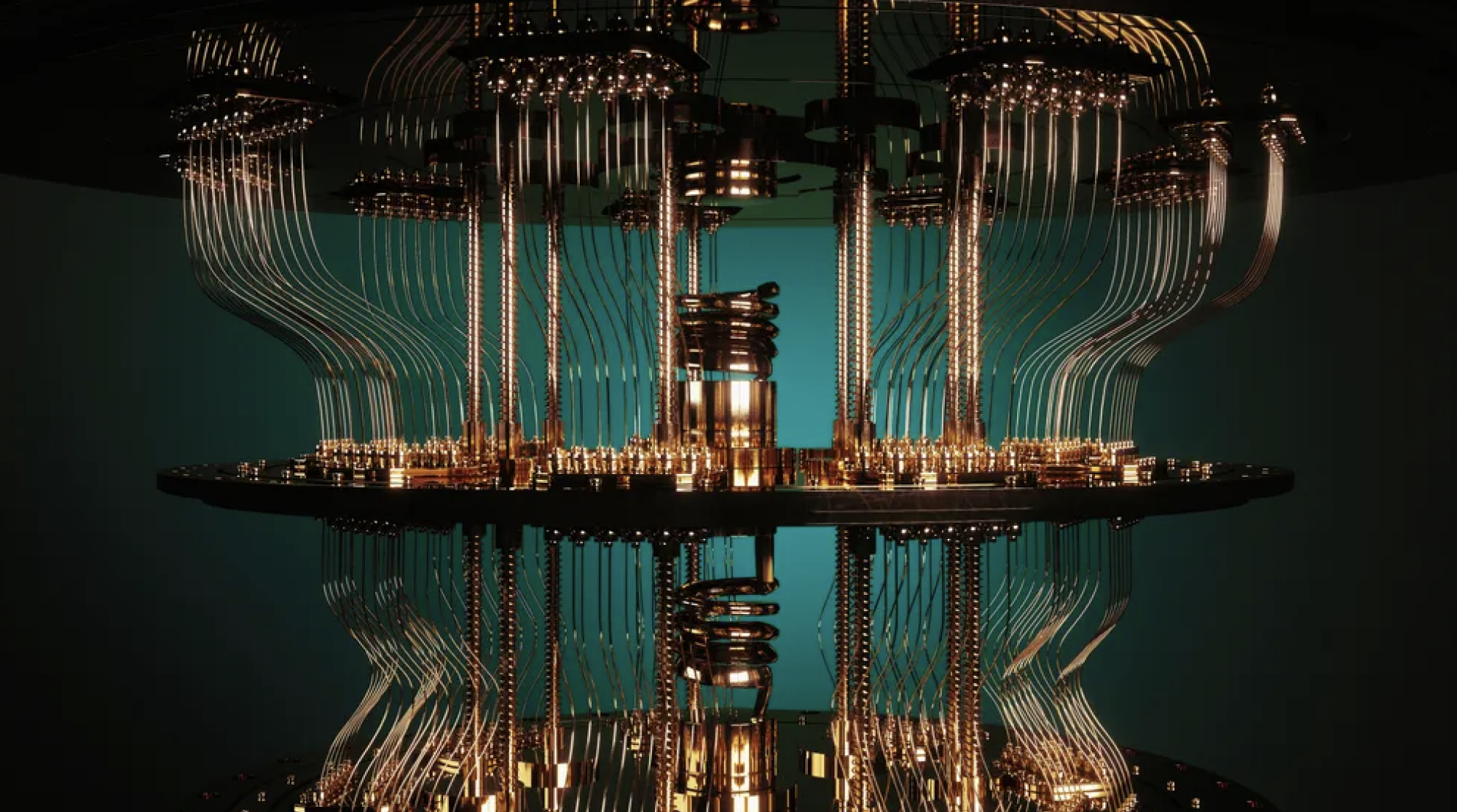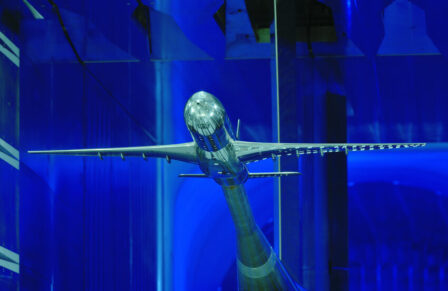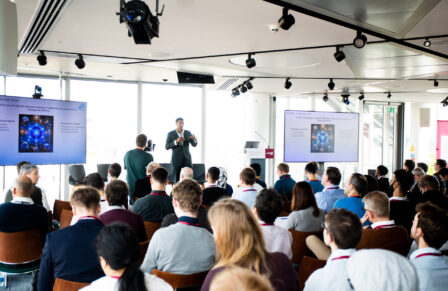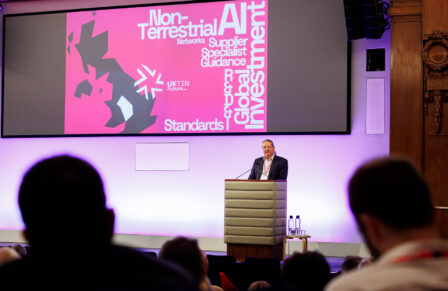Which technology will win the quantum race?
Posted 6 Jun 2022
A qubit is the quantum equivalent of a classical bit (read more here). Below, we explore the bewildering range of qubits available today. As we shall see, qubits can be implemented using atoms, the solid state, a liquid or even photons of light.
Qubit Family Tree
The qubits inside quantum devices can be regarded as black boxes. However, different types of qubit have different strengths and weaknesses, which you may need to be aware of.
We are in the era of Noisy Intermediate Scale Quantum devices, where noise and scale both limit the computations that can be carried out. A qubit needs to be resilient against noise, and maintain its superposition, and entanglement with other qubits, for a long time in the face of environmental interactions. A qubit also needs to have fast operations, and low error rates, so it is possible to carry out many gate operations with minimal errors. Two-qubit gate operations, where one qubit controls another qubit, are particularly prone to error because of cross talk with other qubits.
Some quantum algorithms will require thousands, or even millions of qubits, so all contemporary devices need a plan to scale the number of qubits. The “quantum volume” of a quantum device is a figure of merit reflecting both the number of qubits and their error rates.
As well as resilience against errors, and scalability, it is important that a qubit can connect to as many other qubits as possible. Some quantum algorithms need each qubit to be connected to every other qubit. It is possible to overcome limited connectivity by swapping quantum states from one qubit to another, but there is an overhead to this process, which requires extra two-qubit gates.
In this blog I will also look at three competing paradigms for quantum computing. Beware, by necessity this blog contains some technical details which some readers may wish to skip over.
Atomic qubits
In trapped ion and neutral atom qubits the two quantum states of the qubit are represented by two different energy levels of an electron in an atom.
Trapped ion qubits
Atoms which have lost or gained an electron are called ions, and are electrically charged. Although a static electric field can’t trap an ion on its own, the ions can be trapped by an oscillating electric field in a Paul trap. Once trapped the ions can be cooled using lasers, and then manipulated into different quantum states using lasers of different frequencies. The details are covered in an excellent tutorial by Pennylane. Companies that build trapped ion devices include Quantinuum, a combination of Cambridge Quantum with Honeywell Quantum Solutions, and IonQ.
Devices with trapped ion qubits have relatively low error rates, but it is not clear how scalable these devices are. A new technology for trapped-ion is the quantum charge-coupled device (QCCD). In QCCD the trapped ion qubits are shuffled between different processing zones using dynamic electric fields. This may seem cumbersome, but a similar technique, CCD, is used in the state of the art James Webb telescope. In 2021 workers at Quantinuum used this complex technique to demonstrate real time error correcting.
Neutral atoms (cold atom) qubits
In neutral atom qubits, individual atoms are trapped and shuffled around by lasers using “optical tweezers”. An advantage of this technique is that because the neutral atoms have no charge, there is no electrical repulsion, and they can be placed closer together, making it easier to scale devices. By using two lasers facing in opposite positions the atoms are cooled to a very low temperature, explaining why the qubits are sometimes called “cold atoms”. The US companies ColdQuanta and Atom Computing are both building devices using neutral atoms.
In a 2021 a team, including researchers from the UK subsidiary of ColdQuanta and Riverlane, a UK software company, demonstrated several quantum algorithms on a neutral atom quantum computer. The six qubits were held in place by tightly focused laser beams scanned across a two-dimensional array. In a 2022 Nature paper quantum error correcting codes with 24 qubits were also realised using this technology. The entangled qubits were moved over a volume that could host about 2,000 qubits. Thousand such movements could take place before the qubit lost coherence, showing that neutral atoms could be scalable.
Solid state qubits
Qubits based on superconductors, silicon, diamond NV centres, hexagonal boron nitride, and even exotic Majorana fermions all rely on an understanding of solid state physics, because these qubits are fabricated on thin wafers of solid crystalline material.
Superconducting qubits
Superconducting qubits are “artificial atoms” where the two quantum states of the qubit are represented by different resonant vibrations in electric circuits with superconducting Josephson junctions. The qubit states are manipulated by pulses of microwave radiation and like atomic qubits, need to be kept at very low temperatures.
When Google claimed “quantum supremacy” they used a 53 bit superconducting device. In 2021 IBM announced a record breaking Eagle superconducting device with 127 qubits. IBM plans the Condor device with 1,121 qubits in 2023, and a Kookaburra device with 4,158 qubits by 2025. IBM uses a “heavy hexagonal” qubit layout, where each qubit is connected to two or three other qubits: far from the ideal “all to all ‘’ connectivity needed for some algorithms. Previous IBM processors had a set of control and readout electronics for each qubit, and this design didn’t scale. In their latest processors IBM have multiplexed the readouts. In the UK Oxford Quantum circuits build superconducting computers based on a patented 3D superconducting transmon, and the eight qubit device, ‘Lucy’, is available on Amazon Braket.
In 2022 researchers at MIT demonstrated ultra-thin materials that could be used to put more superconducting qubits on a chip with less cross-talk. SEEQC, a company with a UK subsidiary in London, claims that their integrated quantum and classical processors, and their expertise in low-energy usage, digital single flux quantum (SFQ) technology, will both help scale superconducting qubits, as well as other quantum hardware. They recently received £1.8 million of government funding to pursue this research.
Silicon based qubits
Solid state chips used in today’s classical computers already have tens of billions of transistors. There is much research aimed at leveraging existing fabrication techniques to build large scale quantum devices on silicon. In 2022 Professor Andrea Morello’s team in Australia announced the fabrication of silicon qubits with over 99% error free quantum operations using implanted phosphorus atoms. In the same year similar accuracies were announced by a team in QuTech in the Netherlands, and a RIKEN team in Japan. Also in 2022, a joint team from QuTech in the Netherlands and Intel reported that they had fabricated silicon quantum dot qubits in an existing semiconductor manufacturing facility. However, all these silicon based devices were prototypes, with only small numbers of qubits.
Quantum Motion, a UK based company in London, is working on similar technologies. In 2021 £5.7 million government funding was announced for a three year Altnaharra project, led by Quantum Motion, to design a scalable method to address and read out qubits, in preparation for an integrated fault-tolerant quantum computer.
Diamond NV Centre
A nitrogen vacancy (NV) centre is a defect in a diamond’s crystal lattice, formed when a nitrogen atom is substituted for a carbon atom next to a vacant carbon atom. Electrons trapped in the vacancy form a “colour centre” which can act as an “artificial atom”. When a magnetic field is applied the two quantum states of the qubit are represented by different energy levels of the “colour centre”.
One-qubit and two-qubit gates are possible. In the two-qubit gates the nuclear spin of an atom is the target gate, so the gates are asymmetric. The diamond NV centre gates have slightly higher error rates than the other qubits described above.
Diamond is formed under high temperature and pressure and each carbon atom in the diamond lattice has four stiff, stable covalent bonds with other atoms. This reduces
lattice vibration and increases coherence times. So, unlike other solid state technologies, qubits can be used at higher temperatures. In 2019 Zhang’s group ran a quantum algorithm with two diamond NV centre qubits at room temperature.
Because NV centres are able to interact with photons, which can then act as flying qubits, it is likely that qubits based on diamond NV centres will be deployed in quantum communications, with integrated nuclear spin qubits providing a limited amount of quantum memory. In 2021 Pompili led a team based at QuTech in Delft to implement a three node quantum network using diamond NV centres.
Hexagonal boron nitride
Early work has been carried out at Cambridge University which showed that defects in a two dimensional hexagonal boron nitride lattice may be used in the future as room temperature qubits, in a similar way to diamond NV centres.
Majorana fermions
In 1937 Ettore Majorana, an Italian physicist, hypothesised that a fermion could be its own antiparticle. A fermion is a particle with the spin of a half, for example, an electron. An electron’s antiparticle is the positron. There is a lot of controversy about whether these Majorana fermions really exist. If they do exist then they could be useful for quantum error correction. The quantum state of a pair of Majorana fermions changes when one particle moves around the other. Because the quantum states depend on the history of movement of these particles, known as braids, it is predicted that these topological qubits would be more resistant to decoherence than other qubit types, and would be useful in quantum error correction.
Of course, it is very difficult to fabricate qubits based on a real particle, and harder still when that particle may not even exist. However, the perceived advantages of topological qubits have tempted Microsoft to invest heavily, and in 2022 they claimed to have demonstrated the physics needed to build scalable topological qubits. An earlier claim of an observation of a Majorana fermion in 2018 by Dutch physicist Leo Kouwenhoven was retracted in 2021. It may be a long time before topological qubits are used commercially. In the meantime Microsoft Azure, like Amazon Braket, offers cloud access to quantum computers built by others.
Nuclear magnetic resonance
When researchers first factorised the number 15 on a quantum computer twenty years ago, specially synthesised molecules in a beaker of liquid at room temperature were used as qubits. The quantum states of the qubits were represented by the energy of different nuclear spins in a magnetic field. The researchers exciting the qubits with resonant radio-frequency (RF) pulses to produce one-qubit gates, and leveraged the coupling of two neighbouring electron-sharing nuclei to produce two-qubit gates. A complex technique was developed to place the qubits in the ground state. NMR quantum computers are not often used today because the signal to noise ratio scales badly.
Photonics
Photons are very stable, don’t decohere, and can act as flying qubits. A photonic quantum device can be built with optical components such as ring resonators, phase shifters, beam splitters, and photon detectors, as summarised in a short 2021 article in Nature. Like diamond NV centres, photonics computers can operate at room temperature, although the detectors are often operated at cryogenic temperatures to improve their accuracy.
PsiQuantum, a US company founded in the UK and Xanadu, a Canadian company, aim to build fault tolerant photonics computers on silicon. ORCA, a UK company based in White City, London, leverages patented photon quantum memory to build devices using off-the shelf optical components.
Quantum computing paradigms
Most quantum algorithms are designed for a “circuit model”, where each qubit is shown as a row in the circuit diagram, time advances to the right, and the quantum gates and measurement are shown. By contrast, in a quantum annealing machine, the qubits are linked together in a network. The problem to be solved is embedded on the annealing computer by varying the strength of the links and the computer is allowed to settle in a low energy state that hopefully represents the solution. Quantum annealing devices, such as those built by D-Wave, a Canadian company, seem well suited to certain types of optimisation problems, for example, improving traffic flow.
As described above photonics devices use a third paradigm. Because photons don’t interact well with each other, clever techniques described in a 2014 Nature paper reproduce quantum gates to enable quantum chemistry calculations. An interesting 2022 paper from Orca describes a variational optimisation algorithm run on a photonic computer assisted by a classical computer.
To conclude
Only a very brave person would predict which technology will win the quantum race. Currently devices with superconducting and trapped qubits lead the race with the highest quantum volume. Neutral atom qubits are making up ground. The race will be long, and there is plenty of time for the current leaders to be overtaken.
Silicon based qubits have started slowly, but being able to fabricate the qubits using existing processes may accelerate future progress. Diamond NV centres seem well suited to use in quantum communications. Photonic qubits are a dark horse. An early leader of the race, nuclear magnetic resonance, is losing ground because of scalability issues. Although hexagonal boron nitride qubits are promising, they are still in the starting gate. Topological qubits are also in the starting gate, but if they can get started their error correcting properties mean they might catch up fast. Meanwhile, the quantum annealing paradigm seems well suited to optimisation algorithms, whereas the circuit model and photonic computers have application to a wider range of algorithms.










